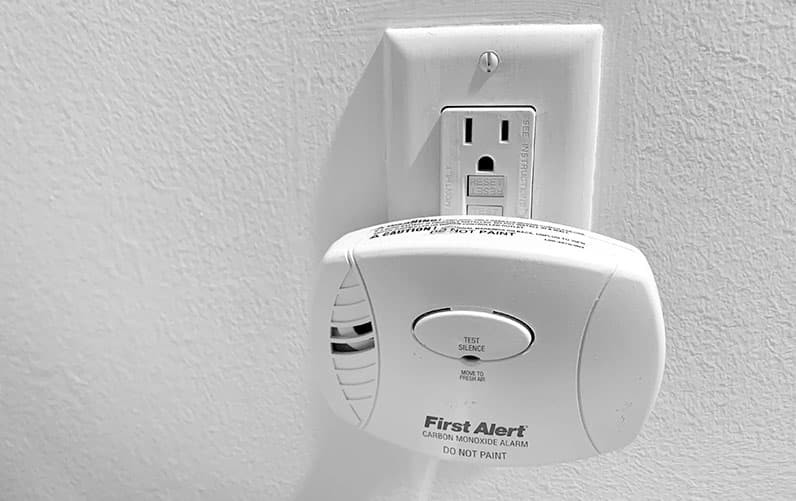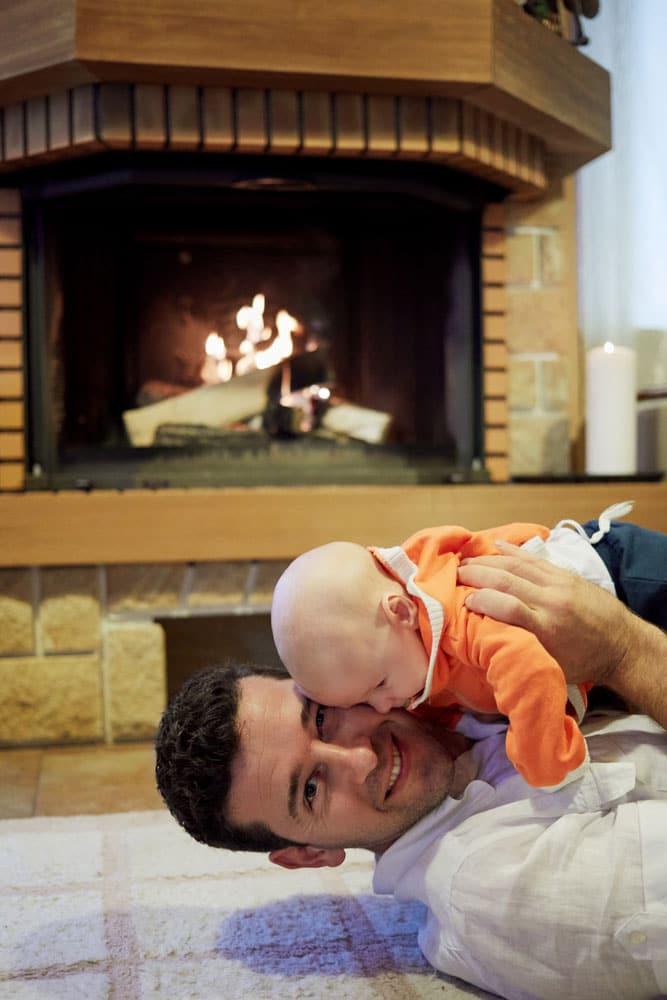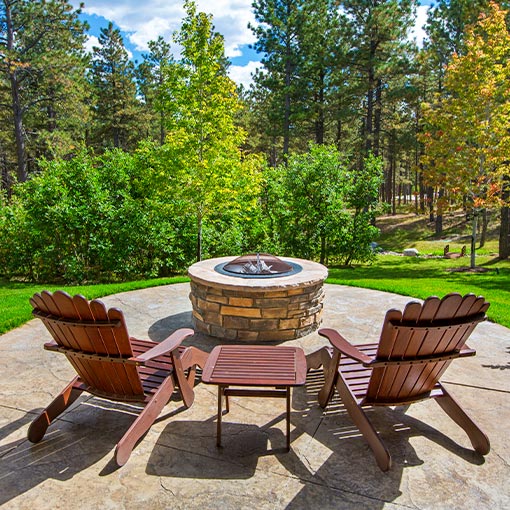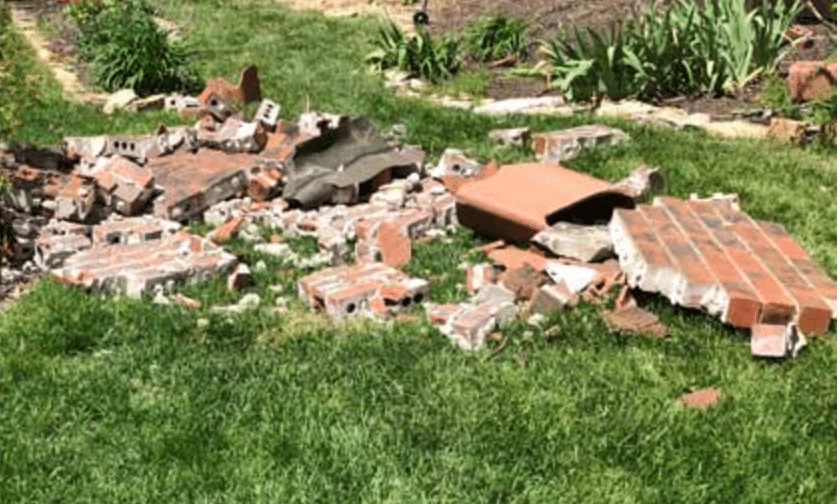Having your first child is an exciting chapter in your life, but it can also be overwhelming. As a new parent, your home may not yet be child-proofed. There are a lot of different safety aspects to think about when a child enters your home. From toxic chemicals to fire hazards, your home is filled with dangerous elements, which is why it’s vital to baby-proof your home before your child arrives. Despite the stress of proper baby-proofing, these tips can help you feel more confident in the safety of your house for your child.
When the right precautions are taken, the entire family can enjoy a fire, safely.
Guard Your Fireplace and Hearth
The fireplace brings a sense of comfort and relaxation to your home, but it can also be a source of danger to a baby.
To keep your child safe, you must ensure that the fireplace is properly guarded. Installing a gate or guard can block off your fireplace from little ones. For best protection, make sure that the gate is secured to the wall so that it will not move.

It’s important to never leave a child unattended in the home/room with a fireplace burning. While fireplace guards, doors, and screens serve different purposes a big reason you want one is to prevent wood-ash embers from popping out and injuring someone. Another concern is children playing too close and leaving flammable objects too close to the heat or flame. Responsible adult supervison is crucial.
For a wood-burning fireplace, you’ll want to place the gate farther from the flames to protect your baby from stray embers. If you have a gas fireplace, install the fireplace guard closer. Although many fireplace gates aren’t stylish, they keep your children safe, so remember that safety is always more important than aesthetics.

Not sure what type of fireplace you have? We Can Help
Check out this article to discover the many different types of systems to help determine which kind of fireplace you have at home.
Install C.O. Detectors
Along with installing safety gates, be sure to perform regular inspections of your fireplace. Keep vents clean as well to avoid toxic gasses entering your home, like carbon monoxide (C.O.)

Image: this style of c.o. detector has a plug-in and a battery for backup. Make sure to change the batteries regularly.
Along with installing safety gates, be sure to perform regular inspections of your fireplace. Keep vents clean as well to avoid toxic gasses entering your home, like carbon monoxide (C.O.)
Carbon monoxide is a clear, poisonous gas that is produced from fires and can lead to death. C.O. goes beyond childproofing the home; It affects everyone in the home. Like smoke alarms, carbon monoxide detectors help by alerting you when the toxin is detected in the air. Keep your family safe by installing carbon monoxide detectors and inspecting them often.
Install Smoke Detectors
Smoke detectors are essential to protect your home and your family. Since you’ll be adding an extra person into your home, you’ll need to make sure that you have enough smoke detectors installed. There should be a smoke detector in every sleeping room and one in each hallway. Smoke alarms should also be interconnected to be sure that they all go off at the same time when necessary.
Test your detectors monthly to make sure that they are working properly and replace them at least every ten years. Smoke detectors can be the difference between life and death if a fire were to break out, so you need to confirm that they are in the best condition.

Add Safety Locks and Latches
When baby-proofing your house, you must think of every possible scenario that could harm your child. Most accidents occur when dangerous items are improperly secured and kept out of children’s hands. Locks should be attached to cabinets that have toxic chemicals and sharp items. You could use external or internal locks, depending on the type of cabinet style you have. These locks are easy for adults to unlatch, but impossible for children, making them a great addition to a baby-safe home.
Cover Electrical Outlets
Babies are naturally curious, and their curiosity can lead them into dangerous situations. Electrical outlets are dangerous to unknowing children who may put their fingers or other objects into the socket, leading to shock. To avoid the threat of electrical shock, use child-proof electrical outlet covers throughout the house. In addition to outlets, inspect your home for loose wires and electrical cords. If not removed or replaced, children could be shocked or choke on loose cords. Being proactive about electrical outlets and cords can save your baby from harm.
Anchor Furniture and Use Edge Bumpers
Many parents don’t realize how dangerous their furniture is until an accident occurs. For example, coffee tables can have sharp corners that a baby could accidentally cut themselves on. Check your home for any sharp corners that could hurt your baby and cover them with edge guards. Edge bumpers are soft covers used to cushion sharp edges on furniture preventing cuts and scrapes.
Additionally, your furniture could be dangerous due to its stability and weight. As your baby begins to stand up, they’ll learn by leaning on furniture to support their weight. If not properly secured, this furniture could topple over and hurt your child. Furniture and other items that aren’t stable also bring the risk of falling onto your baby. Avoid these types of accidents by anchoring your furniture to the floor and putting away heavy objects.
Stabilize Outdoor Chimney Foundation
Not only should you baby-proof the inside of your home, but you also need to make sure that your outdoor space is safe as well. Outdoor fire pits and chimneys can be hazardous if not taken care of properly. Fire pit safety is a must.
They should be at least ten feet away from your home and other flammables. When using a fire pit, keep an eye on the weather as you should never light a fire in windy conditions, or else it may spread.
When outdoors with your baby, keep the fire pit blocked off with gates or a cover to ensure their safety.

Outdoor chimneys can also be dangerous if not well-kept.
If the foundation of the chimney is unstable, it could collapse and result in bricks falling into your yard. The best way to keep your baby safe outdoors is by maintaining your chimney and checking for structural damage frequently.

Unstable chimneys in poor condition pose a risk to anyone in the yard below. When outdoors keep young children from playing near the chimney and make sure to have it annually inspected by a Certified Chimney Sweep near you.
Making Updates to Your Home
Baby-proofing a home takes a lot of work and can become costly. You’ll be purchasing new gates, locks, and covers along with other renovations in your home. If you plan on remodeling a room in your home for a nursery, that can lead to additional costs on top of all the baby-proofing improvements you’ll be making. If you’re concerned about the cost, consider leveraging your home equity to cover expenses. Home equity loans can help with these home improvements and are tax-deductible, making updates less financially stressful which is always a plus, but even more so when you’re adding a new member to your family.
Suggested Content for You
Check out this article to discover how a homes foundation affects you and your homes chimney.
Final Considerations

Keeping your baby safe is a top priority as a parent. From simply covering sharp corners to maintaining your chimney, there are many ways you can make your home safer. While it can be scary caring for a newborn, taking extra safety precautions can ensure that your baby is protected from any harm. With these tips, you can start baby-proofing your home to keep your mind at ease.
If you’re ready for a fireplace and chimney inspection in the Kansas City area, give our Certified Pros a call today at 913-642-6171 or request a call below for assistance getting your house fireplace ready for your growing family!

